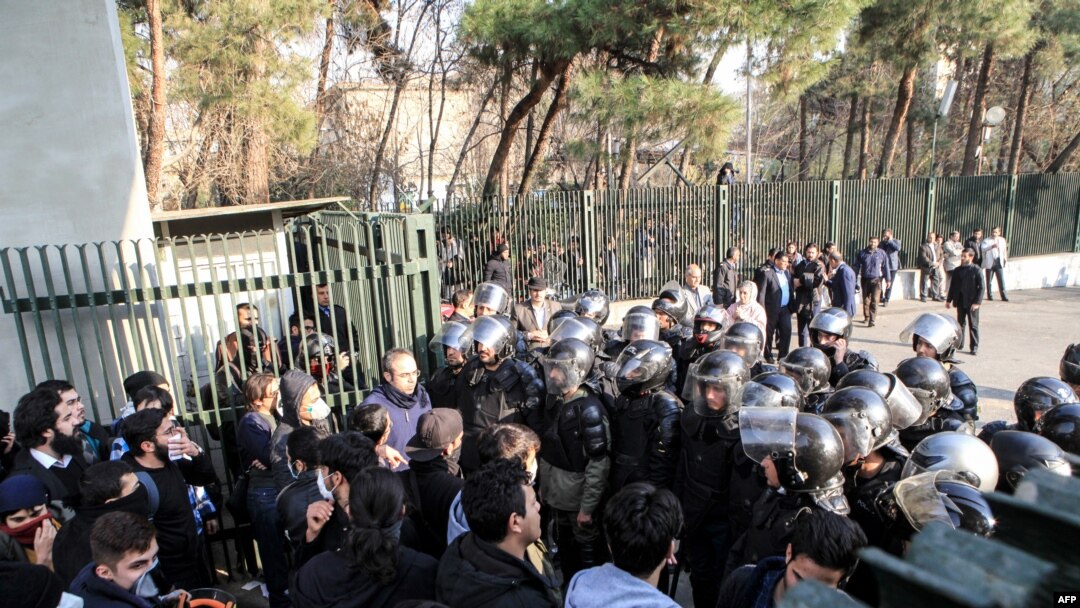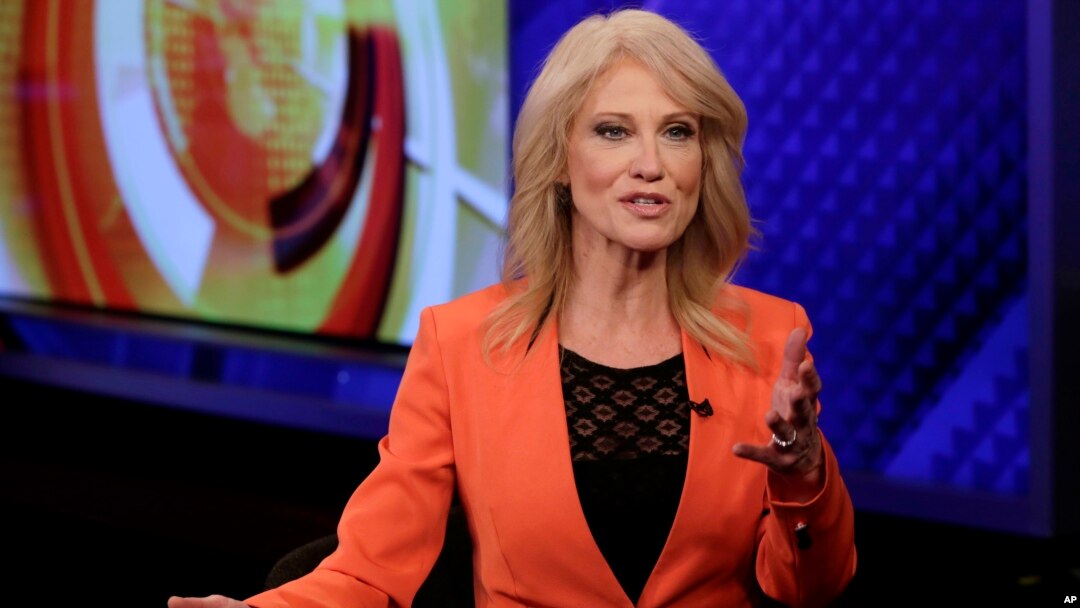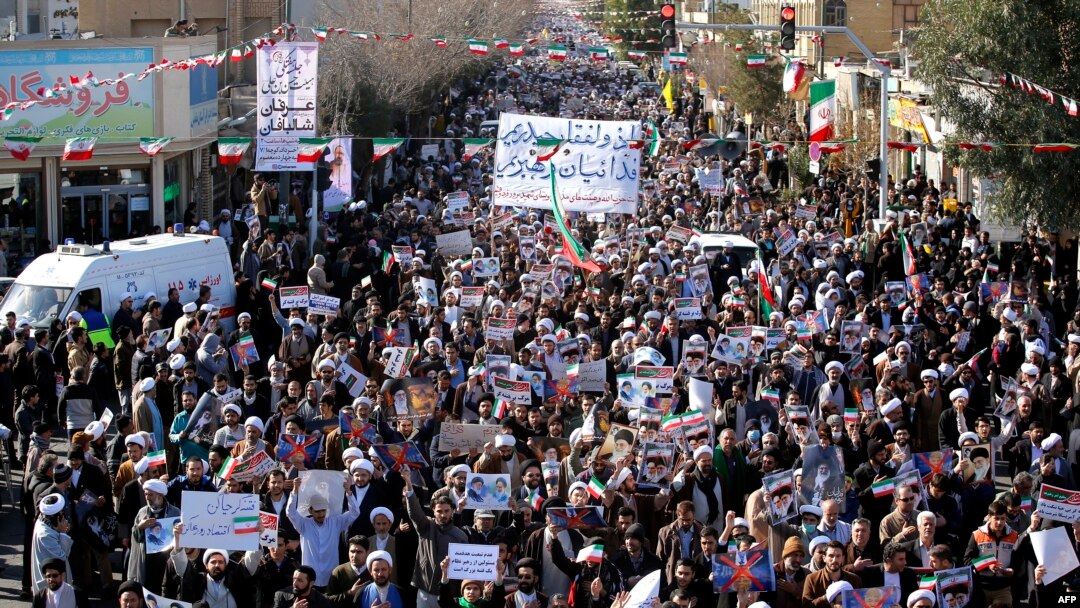To sanction or not? Western intelligence officials are split on whether a new round of U.S. economic sanctions will help anti-government protesters in Iran or work to the benefit of the Iranian authorities by feeding into their claims that the unrest has been fomented by foreign enemies.
President Donald Trump is reportedly considering imposing severe sanctions on Iran's Revolutionary Guard Corps (IRGC) and its commercial entities.
So far, the Guard's domestic paramilitary arm — the Basij militia — has not been deployed en masse to quell the current wave of anti-government protests roiling Iran as it was in 2009 when it spearheaded the crushing of the pro-democracy "green movement." Some Western officials believe the Guard has been held back in order to avoid prompting European governments to follow the U.S. lead and take a much more forthright anti-regime line than they have done.
A U.S. State Department official told VOA on Monday that the Trump administration was pondering further sanctions against individuals in the Tehran regime who are responsible for cracking down on Iranian protesters.

Iranian students scuffle with police at the University of Tehran during a demonstration driven by anger over economic problems, in the capital Tehran on Dec. 30, 2017.
"We're considering a variety of options to hold those people accountable, including sanctions," said Andrew Peek, the deputy assistant secretary of state for Iraq and Iran. He declined to elaborate, but added, "We will hold accountable those people or entities who are committing violence, from the top to the bottom, against the protesters."
On Fox News on Tuesday, Kellyanne Conway, a White House adviser, confirmed the Trump administration was reviewing the possibility of imposing new sanctions. In February, Trump threatened to include the IRGC on the U.S.'s list of terrorist organizations, and in October the administration imposed some economic sanctions on it and on businesses tied to the Guard.

FILE - White House counselor Kellyanne Conway is interviewed by Howard Kurtz during a taping of his "MediaBuzz" program on the Fox News Channel in New York, March 10, 2017.
A senior intelligence official told VOA it remains "unclear how it would play on the ground." Speaking on condition of anonymity, he said Iranian authorities most likely would point to sanctions on the IRGC or others as evidence of Western collusion in the unrest, and that could help the regime "play the patriotic card" and rally more support in its defense.
"Another factor you have to weigh up is what is the likely outcome of the unrest — is it the start of something bigger or is it a spasm of frustration and anger that will diminish gradually?" he said. "I suspect the latter as we are seeing much smaller numbers of participants than in 2009 and the protesters have expressed no clear political goal — and they appear to have little leadership."
The 2009 demonstrators in Iran were mainly drawn from the country's educated and middle classes, and were aimed at forcing the regime to cancel the presidential election in which hard-liner Mahmoud Ahmadinejad secured a second term as president. The election was plagued by widespread allegations of fraud.
The protests that started last Thursday are more geographically widespread than in 2009 and the participants appear to be drawn primarily from the working classes. They were triggered by a rise in the cost of basic goods, including eggs, which soared in price by 40 percent. The protesters initially focused on economic demands in their chants. But their grievances soon took on broader and more political themes challenging the clerical leadership directly.
Slogans have included denunciations of supreme leader Ayatollah Ali Khamenei and Iran's "reformist" president, Hassan Rouhani, as well as the IRGC. That's according to videos of protests posted to social media sites this week and collected by the Washington-based Middle East Media Research Institute (MEMRI), a nonprofit media monitoring and analysis organization.
FILE - Supporters of the Iranian opposition movement wear green during the funeral of Grand Ayatollah Hossein Ali Montazeri in the holy city of Qom Dec. 21, 2009.
In Qom, protesters chanted, "The youth are unemployed, while the clerics sit in a palace." In Tehran, they took issue with Iran's military activities overseas, chanting: "Not Gaza, not Lebanon — we will give our lives to Iran." In Sari, protesters denounced Iran's costly military intervention in neighboring Syria to prop up the regime of President Bashar al-Assad.
And in Kermanshah, chants included, "The people are begging for alms, and the master [Khamenei] lives like a king." In one arresting video clip, a woman is removing her headscarf and waving it defiantly.
In 2009, the IRGC's Basij militia opened fire on the protesters, killing dozens. There have been scattered reports of their doing so again this time, but not on the scale seen nine years ago. Some analysts have questioned whether hard-liners encouraged the current protests at first in a bid to undermine the "reformist" Rouhani government, little appreciating the speed with which the protests would spread. That may explain the slower deployment this time of the Basij militia than in 2009.
Predicting the course of protests is a tricky endeavor, Western intelligence officials acknowledge. The Arab Spring uprisings caught Western and Middle East intelligence agencies off guard; they were slow to understand the significance of the widespread protests. Those also initially were driven mainly by working-class anger at high unemployment, food price inflation, corruption and poor living conditions. The uprisings also started out with little clear overall political leadership. The lack of political freedom was often a secondary grievance, but it took on greater power when regimes sought to crush the protests.
FILE - In this Dec. 30, 2017 file photo taken by an individual not employed by the Associated Press and obtained by the AP outside Iran, a university student attends a protest inside Tehran University.
"How the Iranian protests will develop, how they evolve will partly be determined by the response of the authorities, and it could well assist the regime, if we start taking a hand in all of this," said a French official.
That view is dismissed by some U.S. officials. In his interview with VOA, Peek drew a distinction with the Obama administration's cautious response to the 2009 protests and the Trump administration's. "This is a very different approach from 2009," he said. "We want to make it clear now, through visible and vocal support of the Iranian people, that we will not let them suffer anonymously, that when they want to exercise their basic human rights, we will support them."


